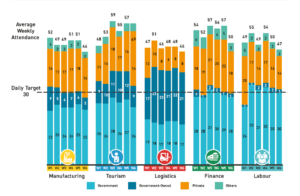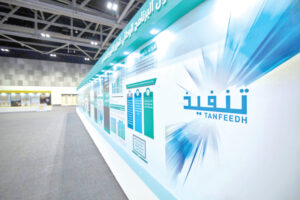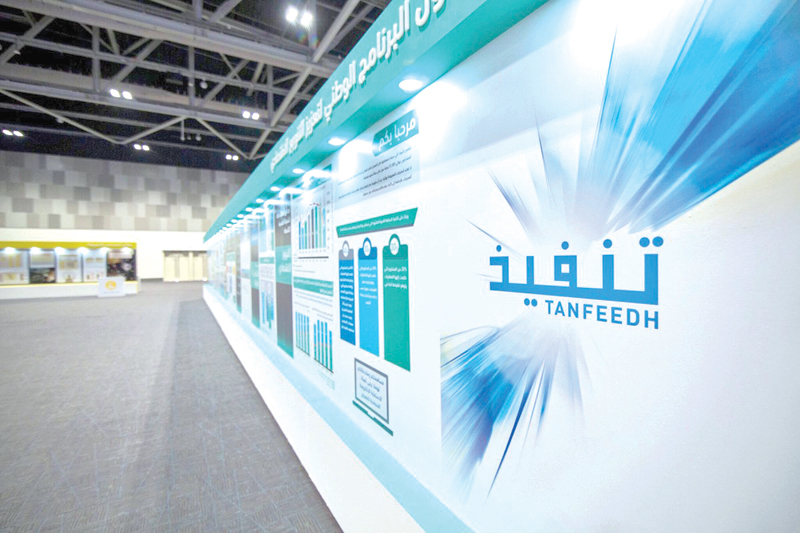Tanfeedh-Oman's Initiative towards Economic Diversification
With the high oil prices in the 1970s, the Sultanate of Oman was able to introduce various initiatives forSiteOrigin Editor the betterment of the people.Under the guidance of the late His Majesty Sultan Qaboos Bin Said, the Human Development Index (HDI) which was just 0.39 in the early 1970s, went on to reach 0.796 in 2015 due to the rise in per-capita income, nearly doubling in 40 years and thereby enhancing the well-being factors within the country.
With varying oil prices in the recent years, the reliance on oil sectors was sought to be reduced and economic diversification was seen as a viable option with the oil sectors contribution expected to decrease from 40.5% of the gross domestic product to 35.6% between 2016 and 2020.
The National Programme for Enhancing Economic Diversification (Tanfeedh) was an economic initiative started to ensure both public and private sectors had a part in the government’s economic diversification plan as fixed by the ninth five-year plan in line with Oman’s Vision 2040. Lifting the dependence away from the oil sector, five sectors namely agriculture and fisheries, logistics and transport, energy and mining, and tourism were focused on as alternate sources of national revenue.
 Based on the Malaysian Performance Management and Deliver Units (PEMANDU),technical support to the Secretariat General of the Supreme Council for Planning (SCP), Tanfeedh was structured slightly different from the earlier diversification initiatives implemented in Oman. It focused on gathering opinions and viewpoints of various government and private sectors, academia and civil societies and allowed the general public to track the progress taken towards the initiatives.
Based on the Malaysian Performance Management and Deliver Units (PEMANDU),technical support to the Secretariat General of the Supreme Council for Planning (SCP), Tanfeedh was structured slightly different from the earlier diversification initiatives implemented in Oman. It focused on gathering opinions and viewpoints of various government and private sectors, academia and civil societies and allowed the general public to track the progress taken towards the initiatives.
Discussion labs were organized in 2016 over a period of 6 weeks with around 250 participants from different backgrounds who were invited to attend and take part along with the sector experts, facilitation team and central lab team.The outcomes from the lab were presented to the public at an exhibition as well as through social media, newspapers, radio, television and an electronic survey on the Tanfeedh website.
The key performance indicators (KPI) discussed in the labs were gathered and finalized with time bound action plans. The Implementation Support and Follow—up Unit (ISFU) was set up and took the role of a monitoring body to ensure a smooth project implementation process along with coordinating with everyone involved. The final stage involved verification and publication of results as well as an annual report with the results brought about through the implementation of the Tanfeedh initiative.
The outcomes have been mixed but have included many successes within the various sectors involved. Within the manufacturing sector, enhancement of the Sohar Cement Factory to increase cement manufacturing locally met 80% of the target progress, whereas 100% of the target for 2017 was met in the Koso Gulf Valves manufacturing plant, Al Taj Cement plant and the One Million Date Palms innovation project.Projects were completed in the tourism and logistics sector with 9 out of 35 KPIs met in the tourism sector and 7 out of 31 KPIs met in the logistics sector by 2017.SMEs were developed in the job market and employment sectors, with the maximum targets being met in the business, environment and finance sectors achieving 21 out of 35 KPIs by the year 2017. 
A significant change brought about by the Tanfeedh initiative was bringing all electricity related activities along with the gas and power sectors under the Ministry of Oil and Gas as proposed by the Energy Labs held in 2020.Along with various other innovations and projects, a minimum output power generation from renewable sources of 11% was decided upon to be achieved by the year 2023.
The government’s initiatives have been successful in creating a plan for the future of the country. Keeping in mind the demographic patterns, resources available and job opportunities being created, the Sultanate of Oman was commended by the International Monetary Fund (IMF) for the Tanfeedh programme’s contribution to the economic diversification plan casting a positive outlook on the country’s future towards attaining SDG 8,Decent Work and Economic Growth.
For a downloadable copy:Decent Work and Economic Growth-Oman



